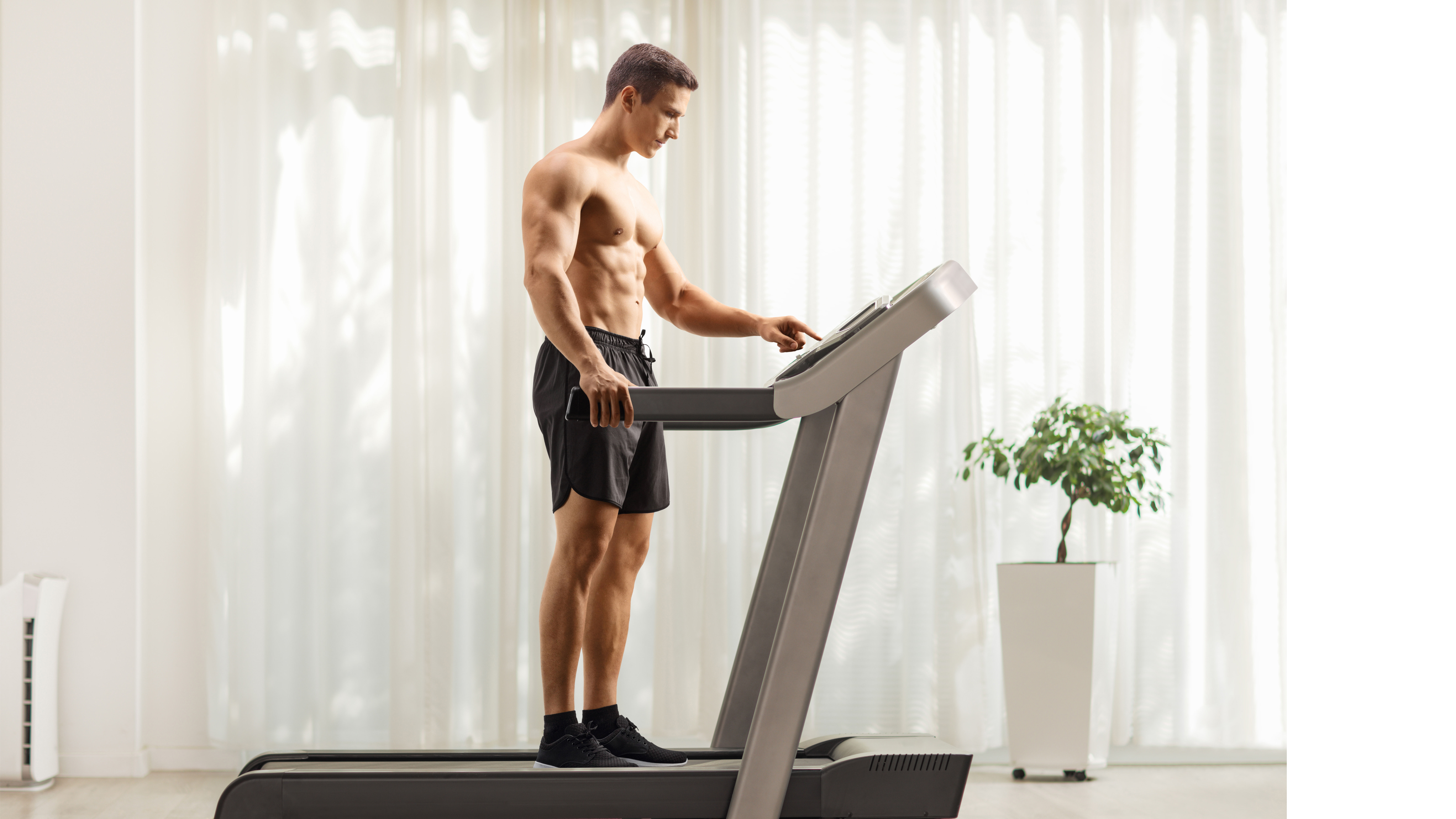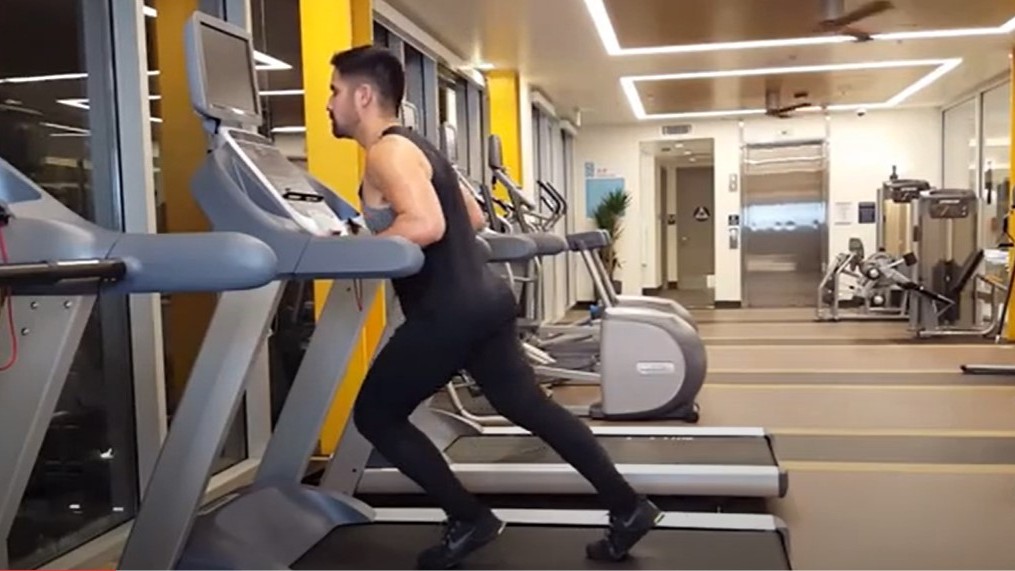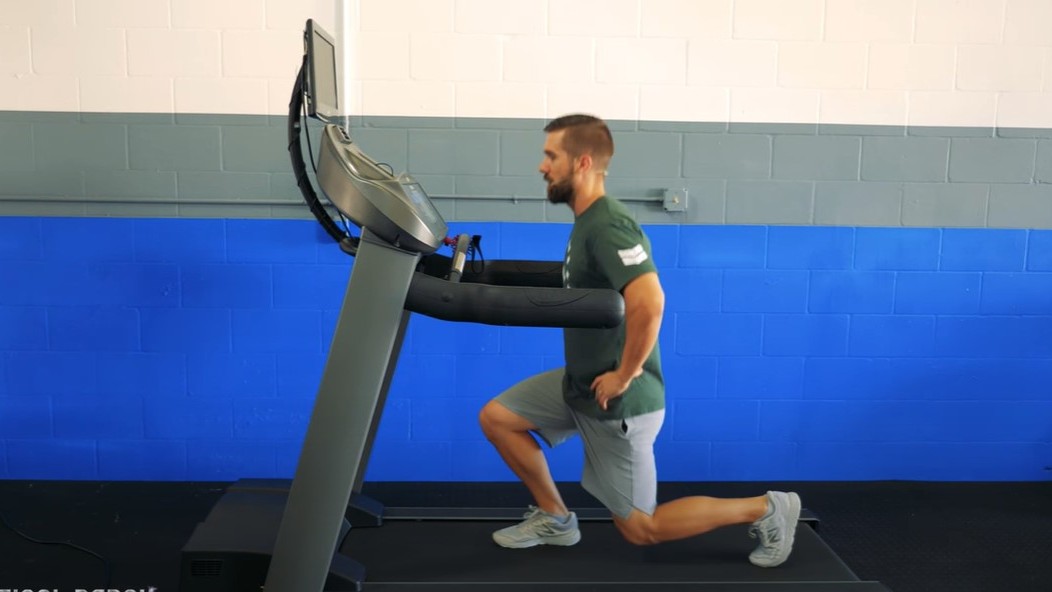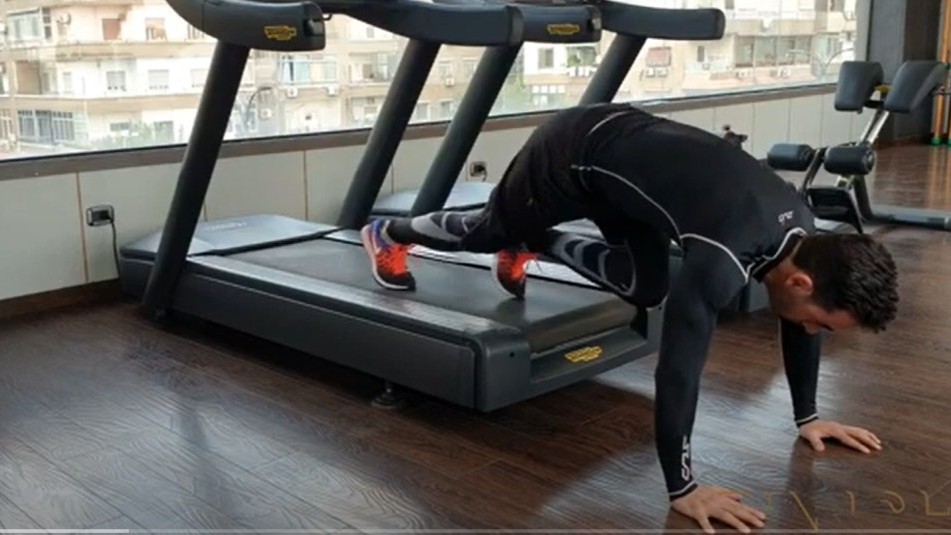
If you don't fancy running, did you know that one of the best treadmills could still offer you a full-body strength workout? Getting creative with your home gym equipment can diversify your workouts — whether you want to build full-body strength, sculpt muscles, or burn calories.
Here are seven things you didn’t know you could do with your treadmill, and it doesn't include backward running or fancy modes on high-tech models. If you’re heading to the gym or taking home workouts, many treadmills now have options to switch between modes like parachute or sled, but if you’re looking at a standard treadmill in your local gym without notable features to play with, there are several ways to fire up muscle groups all over — and not just your legs.
We've got seven full-body strength exercises you can do using your treadmill, how to do them and why you should. Here's how to take your strength program over to your cardio equipment for a change.
7 full-body strength exercises you can do on a treadmill without running
If you’re short on weights at home or the queues in the gym have you questioning why you bothered in the first place, pause for a moment. Your treadmill isn’t just for clocking up the kilometers. Here are seven strength exercises you can do as part of a standalone strength program or mixed with cardio and running to channel your inner Barry’s Bootcamp.
1. Treadmill mountain climbers
If your tread belt won’t move with the machine switched off, turn the speed down to a number you can work with safely. You could also crank up the speed, hit 0 on your treadmill, then jump down into your mountain climbers as the belt slows.
How:
Place your hands on either side of the belt, gripping the sides of the treadmill. Engage your core muscles and place both feet on the belt in a plank position, then place the ball of your left foot just behind your left hand and drive the belt backward, repeating the same with your right foot, moving with speed to maintain motion through the belt.
Get instant access to breaking news, the hottest reviews, great deals and helpful tips.
Here’s how to do a mountain climber in more detail if you want to hone your technique first. You could also add an extra challenge for your muscles by putting your treadmill on an incline if the option is available.
2. Treadmill sled push

High-tech treadmills like Technogym have parachute and sled modes built into the machine, but if you’re working with a more basic model, there’s another way to engage sled mode. This exercise works best with a treadmill belt that moves manually when switched off.
How:
Turn the machine off first, then grip the treadmill handles in front of you. Engage your core and lean forward into the treadmill slightly, then begin driving the belt with your legs. The sled push torches your legs and anterior muscles — your chest, shoulders, arms, core and hip flexors, plus the glutes and legs. You can bend or straighten your arms, so we recommend trying both.
Here’s how to sled push with proper form and a sled push workout program to try.
3. Treadmill walking lunges

Choose a speed that is challenging but manageable and stand on your treadmill. For an extra challenge, hit the incline and ramp up the percentages. Hill training is a brilliant way to ramp up intensity and fire up the muscle groups even more. Inclines engage the posterior chain muscles like your glutes and hamstrings while walking or running downhill targets the quads more.
How:
Begin by stepping the right foot forward and lowering into a lunge, tapping your left knee gently on the belt. Drive through your right heel to stand and immediately step forward with your left foot, keeping in time with the movement of the belt. Lean forward slightly with a neutral spine to hit the glutes harder, and hold weights if you feel comfortable with the exercise.
Here’s how to do a lunge properly.
4. Treadmill bear crawl

The bear crawl targets every major muscle group and requires plenty of hard work from your core muscles.
How:
Start on all fours on your treadmill, using a speed you can keep up with while crawling. Lift both knees an inch off the belt and squeeze your stomach muscles, then step your right hand and left foot forward at the same time. Do the same with your left hand and right foot, and continue crawling along the belt. You could increase the speed or add an incline to make the move harder, and a weight vest can increase the intensity. You could also flip reverse the bear crawl and place your hands on the floor behind the treadmill and rest the balls of your feet on the belt (see above).
Here’s how to bear crawl and what happened when I did the 7-minute bear crawl exercise every day for a week.
5. Treadmill walking plank

There are two ways to approach the treadmill walking plank exercise. The first option only partially uses the treadmill and can be used if you don’t feel comfortable with your hands and feet on the belt.
How:
Select a manageable speed first (roughly 1-2km/h), then start in a plank position with your hands on the sides of the treadmill. Squeeze your stomach, glutes and shoulders to prepare. Step your right, then left hand, onto the treadmill and walk one hand at a time slightly forward to maintain the plank position as the belt moves. Avoid dropping your hips or lifting your bum too high into the air as you walk with your hands.
You could also switch the treadmill off and drive the belt yourself by pulling with your hands as you draw the belt toward you.
The second option can be done by adopting a plank position with both hands and feet planted on the belt. As your belt moves, walk your left hand and foot slightly forward, followed by your right hand and right foot. Add speed or incline to increase the intensity of the core exercise.
6. Treadmill farmer's walk
The treadmill farmer’s walk requires walking on the treadmill while holding one or two weights in your hands. We recommend placing these on either side of the moving belt so that you can pick them up and place them down safely to free your hands if and when you need to.
How:
Select a challenging but manageable speed, then begin walking while holding one or two weights. Add incline and decline options if you prefer, and scale speed accordingly. Keep your spine tall without hunching or slumping, and pull your shoulder blades together to open your chest.
Here’s how to do the treadmill farmer’s walk and why we love it.
7. Decline treadmill push-ups
We recommend alternating the upper-body strength exercise with sprint intervals to switch between upper and lower-body cardio and strength training. The combo will torch your whole body.
How:
Hit 0 on the speed settings, then move to a push-up position with your feet supported on the end of the belt. With your feet raised above your upper body, push-ups feel much harder. Perform a set of push-ups, lowering your chest to the floor, then fully extending your elbows as you push the ground away. For an even more challenging variation, place both hands on the sides of the treadmill (as shown above) and elevate both feet onto the treadmill behind you.
7 strength exercises you can do on a treadmill: Verdict
Treadmill strength exercises can challenge the big and powerful muscle groups as well as your smaller, stabilizing muscles responsible for support, balance, coordination and stability. We prefer working with the treadmill turned off, forcing your muscles to ultimately power the movement — something called deadmill training. If you don’t have that option available, play with the speed settings to find a challenging pace.
Deadmills work the muscles harder and require more energy as you shift the weight using your body alone. The workout style can burn more calories, skyrocket the heart rate and tap into altered running mechanics.
Some research shows that sled training can improve sprint power and forms a lot of resistance sprint training programs. So even if you’re an avid runner and prefer to do just that on your treadmill, there’s a benefit for building strength, power and endurance in your legs. Besides, each of these strength exercises above also requires buckets of core strength — muscles crucial for supporting the torso when you run.
More from Tom's Guide
- 3 standing ab exercises to sculpt your core using a resistance band
- Best treadmill workouts
- This 5-move dumbbell exercise sculpts your entire body in just 30 minutes

Sam Hopes is a level 3 qualified trainer, a level 2 Reiki practitioner and fitness editor at Tom's Guide. She is also currently undertaking her Yoga For Athletes training course.
Sam has written for various fitness brands and websites over the years and has experience across brands at Future, such as Live Science, Fit&Well, Coach, and T3.
Having coached at fitness studios like F45 and Virgin Active and personal trained, Sam now primarily teaches outdoor bootcamps, bodyweight, calisthenics and kettlebells.
She also coaches mobility and flexibility classes several times a week and believes that true strength comes from a holistic approach to training your body.
Sam has completed two mixed doubles Hyrox competitions in London and the Netherlands and finished her first doubles attempt in 1:11.



